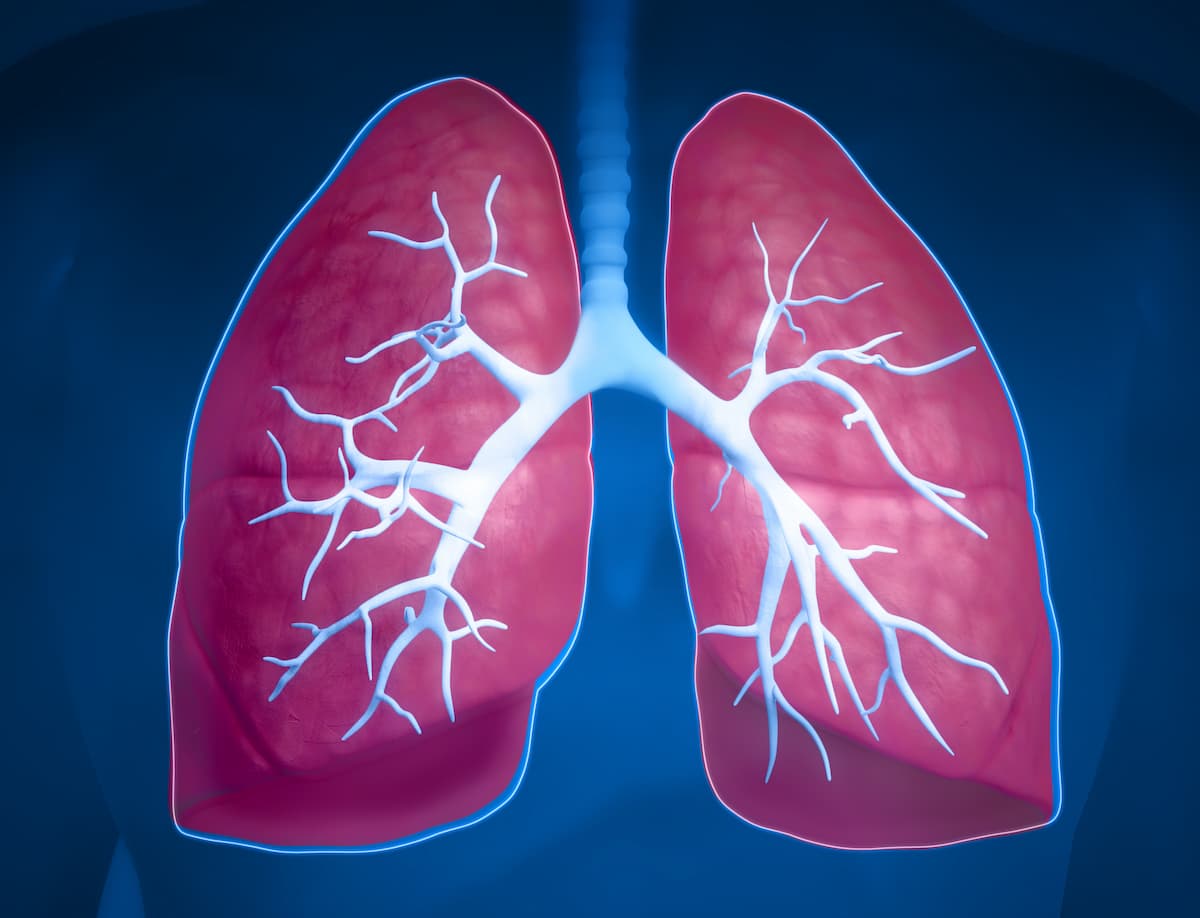Ivonescimab Prolonged PFS vs Pembrolizumab in PD-L1+, Treatment-Naïve NSCLC
Ivonescimab demonstrated a broad prolongation of PFS across various prespecified subgroups in patients with treatment-naïve, PD-L1–positive NSCLC.
Ivonescimab demonstrated a broad prolongation of PFS across various prespecified subgroups in patients with treatment-naïve, PD-L1–positive NSCLC.

Ivonescimab, an advanced PD-1/VEGF bispecific antibody, elicited prolonged progression-free survival (PFS) when compared with pembrolizumab (Keytruda) in patients with previously untreated PD-L1–positive advanced non–small cell lung cancer (NSCLC), according to results from the phase 3 HARMONi-2 trial (NCT05499390) published in The Lancet.1
At the pre-planned interim analysis, with a median duration of follow-up of 8.7 months (IQR, 7.1-10.3), the median PFS was 11.1 months (95% CI, 7.3-not estimable [NE]) with ivonescimab and 5.8 months (95% CI, 5.0-8.2) with pembrolizumab (HR, 0.51; 95% CI, 0.38-0.69; one-sided P <.0001). At 9 months, the estimated PFS rates were 56% (95% CI, 47%-64%) and 40% (95% CI, 32%-48%), respectively.
In patients with a PD-L1 tumor proportion score (TPS) of at least 50%, the median PFS was 11.1 months with ivonescimab vs 8.2 months with pembrolizumab (HR, 0.48; 95% CI, 0.29-0.79) and in patients with a PD-L1 TPS between 1% and 49%, the median PFS was 8.0 months vs 5.4 months, respectively (HR, 0.54; 95% CI, 0.37-0.87). Additionally, in those with squamous NSCLC, median PFS was 9.7 months vs 5.8 months, respectively (HR, 0.50; 95% CI, 0·33-0·76); with non–squamous NSCLC, median PFS was 11.1 months vs 6.7 months (HR, 0.55; 95% CI, 0.36-0.84); with liver metastasis, median PFS was 7.1 months vs 2.7 months (HR, 0.47; 95% CI, 0.23-0.98); and with brain metastases, median PFS was 8.0 months vs 5.0 months (HR, 0.55; 95% CI, 0.28-1.05).
In a press release published by Akesobio, the developer stated, “Based on these promising results, the [supplemental new drug application] for ivonescimab monotherapy as a first-line treatment for PD-L1–positive NSCLC is under review with priority status in China. Ivonescimab in combination with chemotherapy for EGFR-TKI-resistant non-squamous NSCLC, has already been approved and included in the 2024 China National Reimbursement Drug List. The growing body of clinical evidence from multiple phase 2 and phase 3 studies continues to validate ivonescimab's efficacy benefit and safety profile.”2
HARMONi-2 is a randomized, double-blind trial evaluating the efficacy and safety of ivonescimab vs pembrolizumab in patients who are treatment-naïve with PD-L1-positive advanced NSCLC. The trial enrolled a total of 398 patients who were randomly assigned, in a 1:1 ratio, to receive either 20 mg/kg of intravenous ivonescimab every 3 weeks (n = 198) or 200 mg of intravenous pembrolizumab every 3 weeks (n = 200).
Patients were 18 years or older with histologically or cytologically confirmed stage IIIB/C or stage IV NSCLC without sensitizing EGFR mutations or ALK translocations who were also ineligible for surgery or radical radiochemotherapy. Additionally, patients had an ECOG performance status of 0 or 1, at least 1 measurable lesion per RECIST v1.1, provided a tumor sample for PD-L1 test, and had not received any prior systemic therapy for advanced NSCLC.
The trial’s primary end point was PFS as assessed by independent radiology review committee (IRRC) per RECIST v1.1. Secondary end points include overall survival, overall response rate (ORR), duration of response (DOR), disease control rate (DCR), and time to response (TTR).
Assessed by IRRC, the ORR was 50% (95% CI, 43%-57%) with ivonescimab and 39% (95% CI, 32%-46%) with pembrolizumab; the DCRs were 90% (95% CI, 85%-94%) and 71% (95% CI, 64%-77%), respectively. The median TTR was 1.5 months (IQR, 1.4-2.8) with ivonescimab and 2.5 months (IQR, 1.4-2.8) with pembrolizumab, and the DOR was not reached. Overall survival data was not yet mature at data cutoff.
Treatment-related adverse events (TRAEs) occurred in 90% of the ivonescimab group and 82% of the pembrolizumab group; the most common TRAEs of any grade were proteinuria (32% vs 10%), aspartate aminotransferase increased (20% vs 16%), hypercholesterolemia (16% vs 10%), and alanine aminotransferase increase (15% vs 12%). TRAEs led to discontinuation in 2% who received ivonescimab and 3% who received pembrolizumab. Death occurred in 1 patient in the ivonescimab group due to disease progression and 2 patients in the pembrolizumab group due to unknown and respiratory failure.
“Compared with pembrolizumab, ivonescimab reduced the risk of disease progression or death by 49%, with an associated improvement in median PFS of 5.3 months. To our knowledge, this is the first time that a novel treatment has provided a significant improvement in PFS in a randomized phase 3 trial over immune checkpoint inhibitor-based monotherapy,” lead study author Cai-Cun Zhou, MD, from Shanghai Pulmonary Hospital of the Tongji University School of Medicine in Shanghai, China, and fellow investigators wrote in the study.1
Reference
- Zhou C, Xiang A, Wang L, et al. Ivonescimab versus pembrolizumab for PD-L1-positive non-small cell lung cancer (HARMONi-2): a randomised, double-blind, phase 3 study in China. The Lancet. 2025;405(10481):P839-849. doi:10.1016/S0140-6736(24)02722-3
- Akeso announces the publication of its phase III clinical trial results for ivonescimab in head-to-head comparison with pembrolizumab in The Lancet. News release. Akesobio. March 7, 2025. Accessed March 10, 2025. https://tinyurl.com/4rsb7uuh